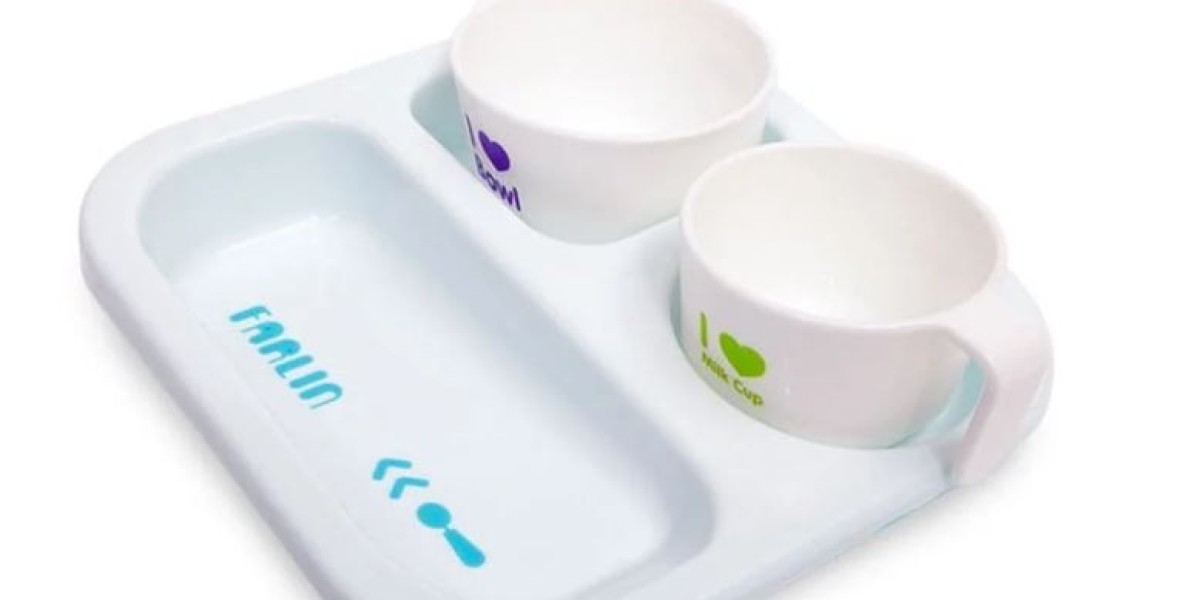Feeding a newborn is one of the most critical aspects of early parenting. While most parents rely on breastfeeding or bottles, there’s another option that’s often overlooked but handy—newborn feeding cups. Explicitly designed for tiny babies, these cups provide a safe, effective way to feed expressed breast milk or formula when breastfeeding isn’t possible or a bottle isn’t the right choice.
In this guide, we’ll cover everything you need to know about newborn feeding cups—their uses, benefits, how to use them properly, and tips for choosing the right one.
What Is a Newborn Feeding Cup?
A newborn feeding cup is a small, specially designed cup that allows babies to sip milk rather than suck it. Unlike bottles, these cups do not have teats or nipples. Instead, milk is poured into the cup, and the baby drinks by lapping or sipping at their own pace.
Feeding cups are typically made from BPA-free plastic, silicone, or stainless steel. They’re designed with small rims or spouts to make feeding easier for tiny mouths and hands.
When Are Feeding Cups Used?
Feeding cups are not meant to replace breastfeeding entirely, but are a great tool in certain situations. They are commonly used:
- For premature or low-birth-weight babies, the baby has difficulty latching or sucking effectively.
- When mothers face breastfeeding challenges, such as sore nipples, infections, or low milk supply.
- Many neonatal units use feeding cups as an alternative to bottles during hospital stays.
- To avoid nipple confusion, some parents prefer cups instead of bottles to keep babies from rejecting the breast.
- For expressed milk feeding, especially when someone else is helping care for the baby.
Benefits of Using a Feeding Cup
Feeding cups may look simple but offer significant advantages for babies and parents.
1. Supports Breastfeeding Success
Unlike bottles, feeding cups don’t mimic a nipple. This prevents nipple confusion and makes it easier for babies to return to breastfeeding.
2. Encourages Baby-Led Feeding
Babies control the pace of drinking. This reduces the risk of overfeeding and supports healthy appetite regulation.
3. Ideal for Preterm Babies
For babies born early, feeding cups help them practice oral skills and gradually transition to breastfeeding.
4. Hygienic and Easy to Clean
Cups don’t have complicated parts like nipples, making them easier to wash and sterilize.
5. Cost-Effective
They’re inexpensive compared to bottles and can last a long time with proper care.
Possible Drawbacks of Feeding Cups
Like any feeding method, cup feeding has some challenges. Being aware of these can help parents make informed choices.
- Messy Feeding – Some milk may spill, especially in the beginning.
- Takes Practice – Parents need to learn proper technique to avoid choking hazards.
- Slower Process – Feeding with a cup often takes more time than bottle-feeding.
- Supervision Needed – Babies cannot be left alone with a cup; parental guidance is required.
How to Use a Newborn Feeding Cup Safely
Using a feeding cup isn’t complicated, but correct technique is key. Here’s a step-by-step guide:
- Prepare the Milk – Express breast milk or prepare formula as directed.
- Fill the Cup – Pour a small amount into the cup (about 20–30 ml).
- Position Your Baby – Hold your baby upright, supporting the head and neck.
- Tilt the Cup Gently – Lightly rest the cup's rim on the baby’s lower lip.
- Allow Baby to Sip – Let the baby lap or sip at their own pace. Do not pour milk into their mouth.
- Take Breaks – Give your baby time to swallow and breathe between sips.
- Burp Your Baby – As with bottle feeding, burping helps release swallowed air.
Tips for Success with Feeding Cups
- Start Small – Begin with short sessions until your baby adjusts.
- Stay Calm and Patient – Babies may spill at first; practice makes it easier.
- Use Sterile Cups – Always wash and sterilize before use, especially for newborns.
- Watch Baby’s Cues – Stop feeding when your baby shows signs of fullness.
- Seek Guidance – Lactation consultants and pediatricians can provide hands-on demonstrations.
Choosing the Right Feeding Cup
When shopping for a Farlin Infant Feeding Set, keep these factors in mind:
- Size – Look for small cups designed for newborns (20–60 ml).
- Material – BPA-free plastic, silicone, or stainless steel is best.
- Design – Cups with curved rims, soft spouts, or measurement markings make feeding easier.
- Portability – Some come with lids for travel and storage.
- Brand Reliability – Choose trusted brands recommended by healthcare professionals.
FAQs About Newborn Feeding Cups
1. Are feeding cups safe for newborns?
Yes, when used correctly under supervision. Feeding cups are widely used in hospitals for premature and newborn babies.
2. Do feeding cups replace breastfeeding?
No. They are meant as supportive tools, not replacements. They’re instrumental when breastfeeding isn’t immediately possible.
3. Can feeding cups cause choking?
Not if used properly. The key is to let babies sip at their own pace rather than pouring milk into their mouths.
4. How often should I sterilize a feeding cup?
After every use, wash with warm soapy water and sterilize daily, especially for newborns.
5. Are feeding cups better than bottles?
It depends. Cups help avoid nipple confusion and are easier to clean but require more patience than bottles.






